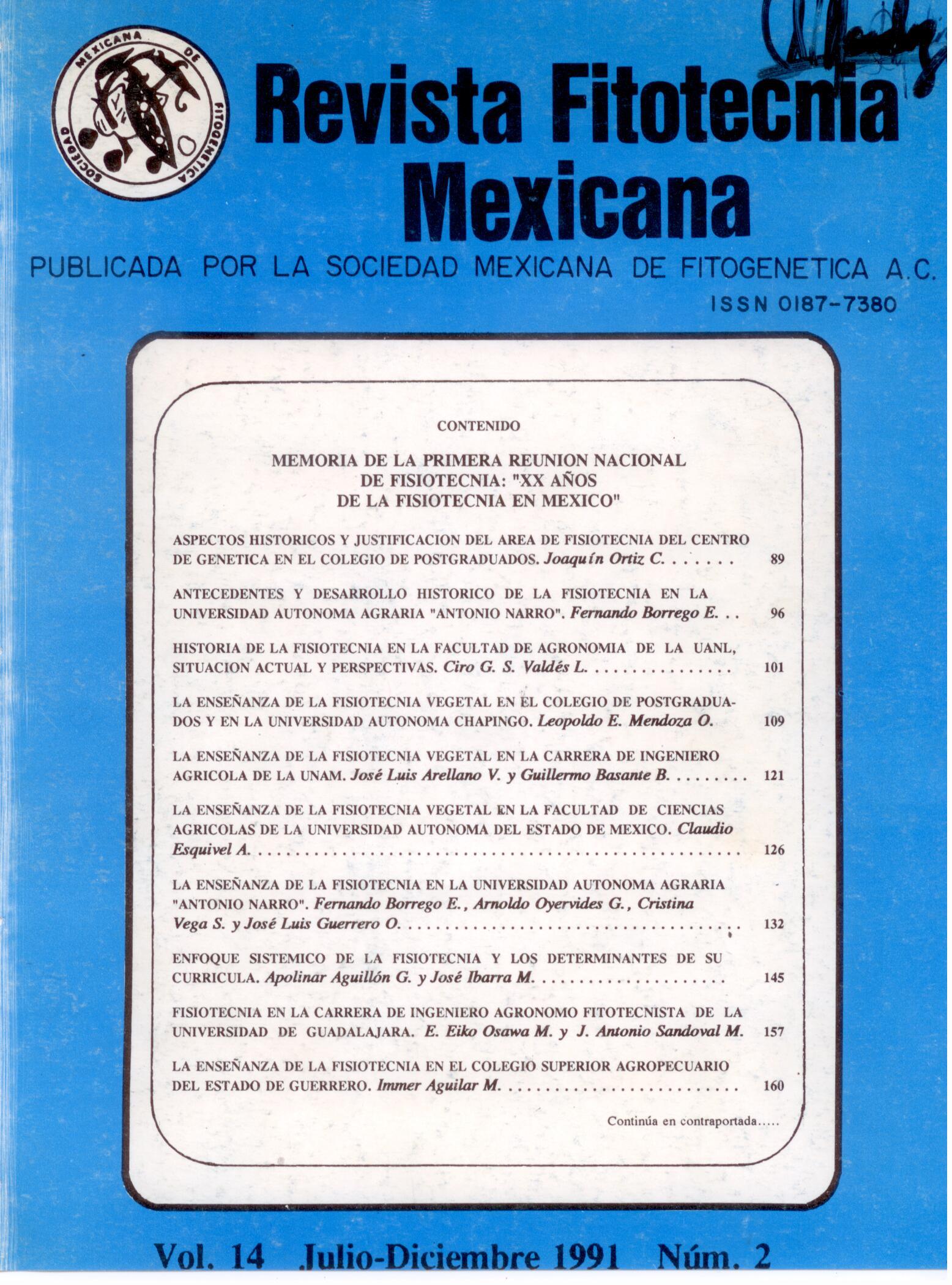PHYSIOTECHNICAL RESEARCH AT THE GENETICS CENTER FROM THE POSTGRADUATE COLLEGE
Main Article Content
Abstract
Plant Physiotechnics is the discipline that studies the interaction of the structure and functioning of plants with the
environmental factors, in relation to their capacity for biomass production and economic performance; Economic performance is understood as the fraction of biomass accumulated in organs of anthropocentric interest. He The main objective is to generate and use physiological, genetic, morphological, anatomical and biochemical knowledge of cultivated plants, to propose more efficient selection criteria to plant breeders, as well as to suggest practices agronomic practices that optimize the use of environmental resources available for agricultural production. Academic activities in Plant Physiotechnics began formally at the Postgraduate College in 1970, with the entry of Dr. Joaquín Ortiz Cereceres to the Genetics Center. He founded this discipline, coined its name, and created the Plant Physiotechnics course at the postgraduate level at the CP, and then at the undergraduate level at the National School of Agriculture (today Chapingo Autonomous University); In addition, through the personal conduct of research projects, the direction of master's theses and the integration of those he had already been carrying out in collaboration with other researchers, Dr. Ortiz gave solid support to Plant Physiotechnics. During the first years, research in this discipline focused mainly on the study of selection criteria and evaluation of genotypes to support genetic improvement, using corn (Zea mays L.) and sorghum (Sorghum bicolor L. Moench) as models. Since then, Plant Physiotechnics at the Genetics Center has considerably expanded its lines of research as the academic level and the amount of human and material resources have been enriched. Thus, today, the Physiotechnics Area is made up of nine academics with an interdisciplinary approach to work, a broad and solid research program, and an important set of material resources. Among the latter are the laboratories, scientific instrumentation, greenhouses and access to the field experimentation infrastructure of the Postgraduate College; Here it is worth adding the field facilities received from the National Institute of Forestry and Agricultural Research (INIFAP) and the Autonomous University of Chapingo (UACH). The marked development of the Area is due, to a large extent, to the clear scientific vision and the determined and sustained dynamism of its founder, as well as the continuous improvement effort of the group of academics and postgraduate students.

